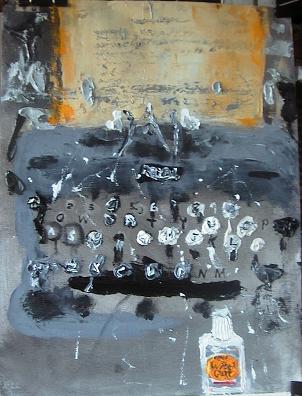Summer Fun — Reading Roberto Bolaño’s Grim, Absorbing 2666
Hello, Josh and the other people who are joining us on the trip through Roberto Bolaño’s 2666 (or, as we call it in Spanish, 2666). We think we will take six weeks, or maybe seven. It’s 890pp. in the English edition. It’s divided into five parts, of rather unequal length. My original thought was that we should do one part a week, except for Part Four, The Part About the Crimes, which would take two weeks. But I’m looking at the pagination again, and I realize that the last section, The Part About Arcimboldi, is also almost 300 pages, so it might make more sense to do Parts Two and Three together for our second session, or it might be worth our while to take seven weeks. I’m letting Josh make the final decision for that.
My qualifications for being the leader of this group are real but more general than specific. I was a very late convert to Bolaño, for a Spanish professor, and as recently as 2005 was teaching surveys of recent Latin American fiction that didn’t include him: consider this blog in part the repayment of a debt. (The first book of his I saw was his story collection, titled in Spanish “The Killer Whores,” and I got the wrong idea.) Since discovering him I’ve read three of the novellas, the three story collections, most of the essay collection Between Parentheses, the unclassifiable Nazi Literature of the Americas, and The Savage Detectives, which I just taught for the first time last year (and I taught the related novella Amulet this last semester). I haven’t had occasion to teach him in English translation. But as for 2666 itself, I started it two winters ago, and got through the first Three Parts before Spring semester began and I had to put it aside. Like everyone else, I know what Part Four is about, but have carefully avoided spoiler alerts about the last section, so soon I will be in the dark along with you.
I know a lot about the legends of Bolaño’s life, from reading the same sources that everyone else has (articles about him that filled in the strategic silences in his interviews by treating his fictional character Arturo Belano as if he were Bolaño himself), and I’ve followed the doubts more recently expressed in articles in The New York Times and elsewhere. This novel doesn’t have Arturo Belano in it, and can be read knowing nothing about Bolaño the author.
I am clumsy at the mechanics of blogging, and am unlikely to offer much in the way of hyperlinks. Let me try to connect to The New Yorker article about him:
http://www.newyorker.com/arts/critics/atlarge/2007/03/26/070326crat_atlarge_zalewski
The advantage to this essay, written in 2007, is that it is before the legends of Bolaño have been cast doubt on, and it’s before the publication in English of 2666, so spoiler alerts are unnecessary.
Pat
4 Comments
Sorry, the comment form is closed at this time.

I think I will read along. (This will save me from the summer I otherwise had planned, of burning through the entire oeuvres of Agatha Christie and Ngaio Marsh.)
But no spoilers please, everyone! I don’t know anything about Part Four or indeed any other parts. My only exposure to Bolano is a failed attempt at Savage Detectives. A reading group will doubtless be helpful for me.
Comment by jms | July 5, 2012
I really loved this book, gave my paper copy to my dad. I’ll get another to participate. I just finished Savage Detectives which was IMO a very effective prelude and/or rough draft.
Comment by lw | July 10, 2012
Yay!
Comment by Josh K-sky | July 11, 2012
[…] the word is unambiguous. As far as “an ellipsis of self-portraits,” “this novel doesn’t have Arturo Belano in it”–although according to the afterword, “among Bolaño’s notes […]
Pingback by 2666, viewed properly (although one could never be sure of viewing it properly) « The Weblog | July 12, 2012